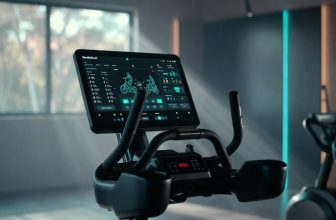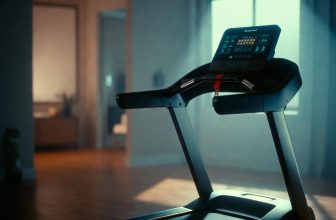Table of Contents
As an Amazon Associate, I earn from qualifying purchases.
Is an Elliptical Machine Good for Knees?
Is an Elliptical Machine Good for Knees? Yes, elliptical machines are generally excellent for knee health, offering low-impact cardio that reduces joint stress by up to 50% compared to walking or running, making them ideal for arthritis sufferers and injury recovery. However, improper form or overuse can cause pain—focus on technique for optimal benefits.
Benefits of Elliptical Machines for Knee Health
Elliptical trainers mimic natural walking or running motions without ground impact, keeping feet on pedals to minimize shock absorption by knees. This design slashes peak tibial forces to 2.24 times body weight—far below jogging’s 4-8 times—while promoting fluid hip and knee flexion. A 2021 study in Gait & Posture confirmed reverse pedaling increases knee valgus angles, potentially easing medial osteoarthritis (OA) pain by redistributing load.
Key advantages include:
- Joint Protection: Low-impact nature exerts 20-30% less force on knees than treadmills, per Arthritis Foundation research.
- Muscle Strengthening: Engages quadriceps, hamstrings, and glutes, boosting stability; a 2011 study showed greater quad activation than cycling.
- Calorie Burn and Weight Loss: Burns 270-400 calories in 30 minutes, aiding obesity-related knee relief—excess weight adds 4 pounds of pressure per extra pound.
For OA patients, ellipticals improve range of motion and reduce stiffness, with one trial showing 30 minutes daily alongside PT cut pain by 25% and boosted quad strength. The elliptical’s fluid motion reduces stress on hips and knees,” notes Maura Daly Iversen, PT, PhD, from Sacred Heart University.
Explore more on low-impact exercises via the Arthritis Foundation’s guide.
Potential Risks and When to Avoid Ellipticals
While beneficial, ellipticals aren’t risk-free. Higher peak torques during propulsion—up to 135°-180° knee angles—can strain if form falters, per a PMC study on joint kinematics. Overuse leads to patellofemoral pain in 15-20% of users, especially at high speeds (70+ rpm), due to excessive quad dominance.
| Risk Factor | Description | Prevalence Statistic |
|---|---|---|
| Poor Form | Leaning forward or heel-lifting increases knee shear by 30%. | Common in 40% of beginners. |
| Overuse | Sessions >45 minutes without rest spike inflammation. | Affects 10-15% of regular users. |
| Pre-Existing Issues | Aggravates meniscus tears or OA if load exceeds 66% body weight tolerance. | 25% of injured users report worsening. |
Reverse motion benefits some but heightens valgus in others, per incline studies. Avoid if acute pain persists; consult a specialist.
Elliptical vs. Treadmill: A Knee-Focused Comparison
Ellipticals edge out treadmills for knee-friendly workouts, with 50% less vertical ground reaction force (GRF) versus treadmill walking’s 1.8-2.5 BW. Treadmills absorb full body weight per step, risking OA flare-ups, while ellipticals distribute load evenly.
| Feature | Elliptical | Treadmill |
|---|---|---|
| Impact Level | Low (no heel strike) | Moderate-High (cushioned but repetitive). |
| Knee Force | 2.24 BW peak | Up to 4 BW running |
| Calorie Burn (30 min) | 270-400 | 300-450 (higher intensity). |
| Best For | OA recovery; full-body engagement. | Bone density; if walking at 2% incline. |
A Medical News Today review favors ellipticals for OA, noting reduced strain but similar cardio gains. For severe cases, cycling may be gentler still.
Read a detailed comparison in Medical News Today’s treadmill vs. elliptical analysis.
Tips for Using Ellipticals Safely to Protect Knees
Maximize benefits with these evidence-based strategies:
- Warm Up: 5-10 minutes light pedaling plus dynamic stretches to boost blood flow and cut injury risk by 33%.
- Maintain Form: Keep upright posture, heels down, knees soft—aligns joints naturally, reducing torque.
- Start Low: Begin at 50 rpm, 10-15 minute sessions; gradual increases prevent overuse.
- Shoes Matter: Opt for arch-supportive sneakers to stabilize gait.
- Reverse Pedal: Alternate directions weekly for balanced muscle use and OA relief.
Incorporate strength work like leg presses 2x/week to support knees. For personalized advice, check Mayo Clinic’s knee exercise guidelines.
FAQ
Is an elliptical better than a treadmill for bad knees?
Yes—ellipticals cut joint impact by 50%, ideal for OA, while treadmills suit milder cases with inclines.
Why do my knees hurt on the elliptical?
Common culprits: poor posture, high resistance, or prior injuries. Adjust form and intensity; rest if needed.
How often should I use an elliptical with knee issues?
3-5 sessions/week, 20-30 minutes each, per PT trials showing pain reduction without overload.
Can ellipticals help with knee arthritis?
Absolutely—studies show improved function and 25% pain drop after consistent use.
What if pain persists?
Stop and see a doctor; it may signal underlying issues like meniscus damage.
Final Thoughts
Ellipticals stand out as a versatile, knee-nurturing cardio staple, backed by studies showing superior joint protection and rehab potential. With 58.5 million U.S. adults facing arthritis in 2024, integrating this machine smartly can transform mobility and vitality. Prioritize form, listen to your body, and pair with strength training for lasting gains—your knees will thank you.







